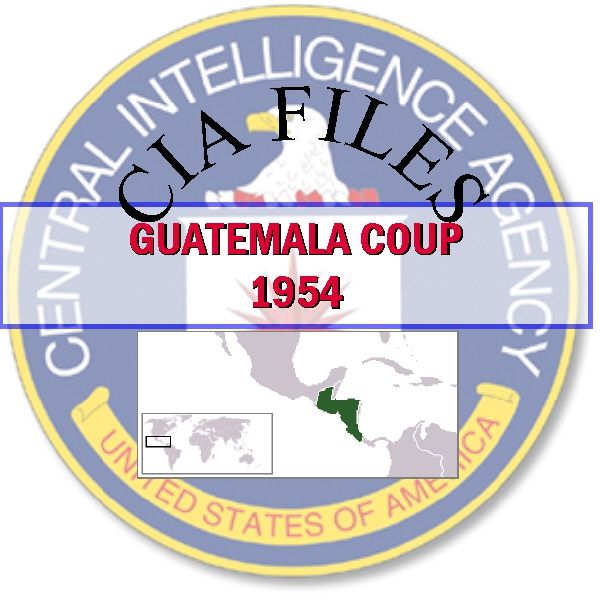
Guatemala 1954 Coup – Operation PBSuccess CIA Files
$19.50
Guatemala 1954 Coup – Operation PBSuccess CIA Files
Description
1954 Guatemalan Coup: Operation PBSuccess Timeline
Detailed Timeline of the 1954 Guatemalan Coup (Operation PBSuccess)
This timeline is constructed based on the provided excerpts from “Guatemala 1954 Coup – Operation PBSuccess CIA Files & State Department Transcriptions – Download.”
Early Planning & Justification:
- 1951: Initial plans for the ouster of Guatemalan President Jacobo Árbenz Guzmán are considered under the codename PBFORTUNE. This suggests that the US government was considering intervention well before the 1954 coup.
- By 1953: The CIA identifies President Jacobo Árbenz Guzmán as a serious Communist threat due to:
- Confiscating two-thirds of United Fruit Co.’s 332,000 acres as part of his agrarian reform program.
- Legalizing the Communist Party in Guatemala.
- 1953: The CIA draws up plans for “K groups,” or assassin teams, to work with sabotage groups, indicating a move towards more active intervention.
Escalation and Covert Operations:
- January 11, 1954: The CIA sends 20 silencers for .22-caliber rifles to rebels training in Honduras, suggesting active arming and support of anti-Árbenz forces.
- March 1954: The CIA develops criteria for assassination targets, formalizing the planning for the elimination of key political and military Communist leaders.
- March – June 1954 (Implied): The CIA implements “Nerve War” tactics, including:
- Sending wooden coffins and hangman’s nooses to targets to intimidate them.
- Planting phony bombs to create fear and instability.
- Painting threatening messages like “Here Lives a Spy” and “You have only 5 Days” on the houses of perceived enemies.
- Pre-June 1954: The CIA compiles “hit lists” of individuals to be assassinated.
- Pre-June 1954: The CIA begins training Central American assassins for the purpose of killing political and military Communist leaders in Guatemala.
- June 1954: The US-supported rebels invade Guatemala. The operation is codenamed PBSuccess.
- June 27, 1954: President Jacobo Árbenz Guzmán resigns from his position, two weeks after the US-backed rebel invasion began.
Aftermath and Consolidation of Power:
- Post-June 27, 1954: Rebel leader Castillo Armas, who assumes power after Árbenz’s resignation, provides the CIA with a list of 58 people to be assassinated.
CIA and State Department Documentation & Analysis:
- 1952-1954: The events and circumstances leading to the planning and execution of the coup are documented in CIA files and State Department transcriptions.
- 1983: The State Department publishes “Foreign Relations of the United States, 1952–1954 Volume IV The American Republics,” including a section on Guatemala. However, this compilation is later acknowledged as incomplete and flawed due to the omission of significant CIA involvement.
- Early 1990s: The Directors of Central Intelligence officially acknowledge eleven covert actions during the early Cold War, including the Guatemala operation.
- Early 1990s: Department of State historians gain fuller access to the CIA’s files on Guatemala.
- 2003: The State Department publishes “Foreign Relations of the United States, 1952–1954 Retrospective Volume Guatemala,” which aims to provide a more detailed and comprehensive account of PBSUCCESS based on improved access to CIA records. This volume focuses primarily on documents from the CIA’s Directorate of Operations (DO).
- CIA Historical Analysis (Ongoing): The CIA conducts internal reviews and historical analyses of its performance and the impact of the coup.
Key Aspects Revealed in the Documents:
- The CIA had a detailed plan for assassination, including training assassins and identifying targets. However, the documents suggest these plans were never formally approved at the highest levels or carried out.
- Propaganda was a key element of Operation PBSuccess, as evidenced by the “Sherwood tapes.”
- The CIA utilized psychological warfare tactics (“Nerve War”) to destabilize the Guatemalan government and create an atmosphere of fear.
- The US government viewed the democratically elected Árbenz as a Communist threat primarily due to his land reform policies affecting the United Fruit Company and the legalization of the Communist Party.
- The overthrow of Árbenz marked the end of the Guatemalan Revolution of 1944–1954.
Cast of Characters with Brief Bios:
- Jacobo Árbenz Guzmán: The democratically elected President of Guatemala who was overthrown in the 1954 coup. He implemented progressive reforms, including land redistribution, which threatened the interests of the United Fruit Company and led the US to perceive him as a Communist threat. He resigned on June 27, 1954, following a US-backed rebel invasion.
- Castillo Armas: The leader of the US-supported rebel forces that invaded Guatemala in June 1954. He became the leader of Guatemala after Árbenz’s resignation. He provided the CIA with a list of 58 people to be assassinated.
- United Fruit Co.: A powerful American corporation with significant landholdings in Guatemala. Árbenz’s land reform policies, which expropriated some of their unused land, were a major factor in the US decision to intervene.
- Central Intelligence Agency (CIA): The US intelligence agency responsible for planning and executing Operation PBSuccess, the covert operation to overthrow President Árbenz. The provided sources detail their planning, training of rebels, use of propaganda and psychological warfare, and consideration of assassination.
- State Department (of the United States): The US government department involved in shaping foreign policy towards Guatemala. While the 1983 publication initially downplayed the CIA’s role, later access to CIA files led to a more comprehensive understanding documented in the 2003 retrospective volume.
- Dwight D. Eisenhower: The President of the United States during the 1954 coup. While not explicitly detailed in these excerpts, the operation was carried out under his administration, indicating his implicit or explicit approval.
- John Foster Dulles: The US Secretary of State during the 1954 coup. His papers are mentioned as a source of documentation, suggesting his significant involvement in shaping US policy towards Guatemala.
Guatemala 1954 Coup – Operation PBSuccess CIA Files & State Department Transcriptions
2,846 pages of CIA documents and State Department transcriptions covering the Agency’s involvement in the 1954 coup in Guatemala to overthrow President Jacobo Arbenz Guzman.
PBSuccess was the code name for a covert operation carried out by the U.S. Central Intelligence Agency (CIA) that deposed the democratically elected Guatemalan President Jacobo Árbenz Guzman and ended the Guatemalan Revolution of 1944–1954. Guzman was seen as a serious Communist threat after confiscating two-thirds of United Fruit Co.’s 332,000 acres and legalizing the Communist Party.
CIA Files
1,937 pages of CIA files covering the 1954 Guatemalan Coup.
These records encompass the events and circumstances causing U.S. policymakers to plan the overthrow of the Guatemalan Government in June 1954 as Cold War tensions mounted between the two superpowers; CIA plans for and execution of the covert action; the outcome; and CIA historical analysis of CIA’s performance and impact of the coup. The collection includes reviews of the event by CIA historians, administrative memos regarding operational plans and internal approvals; operational cable traffic; and summaries of the Sherwood tapes used for propaganda purposes.
“The essential point of assassination is the death of the subject,” a short and succinct line from a CIA memo in the training file for PBSuccess, with the subject head, “A Study of Assassination.”
The files show that “hit lists” were compiled and the CIA began training Central American assassins to kill political and military Communist leaders. According to CIA review the assassination plans were never carried out and never formally approved by top State Department or CIA officials, or the White House. President Guzman resigned on June 27, 1954, two weeks after U.S. supported rebels invaded Guatemala. The files show that rebel leader Castillo Armas, who took the place of Arbenz, gave the CIA a list of 58 people to be assassinated.
In 1953, the CIA drew up plans for “K” groups, or assassin teams, to work with sabotage groups. According to a January 11, 1954 cable the CIA sent 20 silencers for .22-caliber rifles to rebels training in Honduras. In March 1954, the CIA drew up criteria for assassination targets. Files include information about “Nerve War” which included sending wooden coffins, hangman’s nooses and phony bombs to targets. “Here Lives a Spy” and “You have only 5 Days” were painted on their houses.
The files include an instructional guide on assassination titled, “A Study of Assassination.” The document offers descriptions of procedures and assassination hints such as, “The simplest local tools are often much the most efficient means of assassination… A hammer, axe, wrench, screwdriver, fire poker, kitchen knife, lamp stand, or anything hard, heavy and handy will suffice.” “…Puncture wounds of the body cavity may not be reliable unless the heart is reached… Absolute reliability is obtained by severing the spinal cord in the cervical region.”
Department of State Foreign Policy Documents Transcriptions
3,145 pages in two volumes, with 920 pages directly covering Guatemala, of The Foreign Relations of the United States series. Foreign Relations of the United States, 1952–1954 Retrospective Volume Guatemala (1983) and Foreign Relations of the United States, 1952–1954 Volume IV The American Republics (2003).
The Foreign Relations of the United States series presents the official documentary historical record of major foreign policy decisions and significant diplomatic activity of the United States Government.
Foreign Relations of the United States, 1952–1954 Volume IV The American Republics (1983) – This volume presents documents on the major aspects of relations between the United States and the nations of Latin America. The first section records the main lines of United States policy within a general regional framework. The remainder and larger part of the volume presents documents on United States policy toward and relations with individual Latin American nations
Foreign Relations of the United States, 1952–1954 Retrospective Volume Guatemala (2003) – This volume is part of a sub-series of volumes of the Foreign Relations series that documents the foreign policy of the administrations of Harry S Truman and Dwight D. Eisenhower. It is a supplement to the 1983 publication of Volume IV, American Republics. Volume IV, covered both multilateral relations as well as bilateral relations for 20 American Republics, including Guatemala. The historian who collected and prepared that volume knew that the compilation on Guatemala as published was incomplete and flawed. The role of the Central Intelligence Agency in the ouster of Guatemala’s elected president, Jacobo Arbenz Guzmán, was not documented in the volume.
The historian responsible for the 1983 volume gained some access to CIA records of the operation. He inserted references to the covert operation into the Guatemala compilation, but they were denied in the declassification process. Despite internal debate, the Office of the Historian published the volume without the inclusion of a disclaimer indicating that the published documentation on Guatemala provided an incomplete and distorted history. Critical reviews of the compilation appeared in academic journals and major newspapers.
In the early 1990s, Directors of Central Intelligence officially acknowledged eleven covert actions during the early cold war years, including Guatemala. At the same time, Department of State historians gained fuller access to the CIA’s files on Guatemala. The 2003 volume is a product of improved access. The Central Intelligence Agency reviewed the volume for declassification in coordination with its review of documents on the Guatemala operation that was released to the National Archives.
The 2003 volume fills in many details about the role of the United States in Guatemala in the early 1950s. The CIA operation in Guatemala is an important instance of the use of covert action to implement U.S. foreign policy, and the 2003 volume provides a detailed account of that action. Because the focus of the volume is on a covert program, the documents published in the 1952–1954 American Republics volume are not reprinted here, but footnotes and editorial notes refer back to the more significant covert aspects covered in the volume published in 1983. The two volumes complement each other and should be read together for a full and comprehensive account.
The Department of State historian was convinced that the Central Intelligence Agency made all relevant documents available for this publication.
The 2003 volume is a retrospective volume on Guatemala, 1952–1954, is a documentary history of PBSUCCESS, the Central Intelligence Agency operation leading to the 1954 coup that removed President Jacobo Arbenz Guzmán from power. As such, this volume relies primarily on documents of the Directorate of Operations (DO) at the Central Intelligence Agency. Most of the DO documentation is in Job 79–01025A, a collection that includes extensive records for PBFORTUNE, an initial plan first considered in 1951 to oust Arbenz; PBSUCCESS, the plan as implemented; and PBHISTORY, the project to analyze and utilize documents of the Arbenz government. The majority of the documentation in Job 79–01025A is comprised of internal memoranda and cable traffic, especially telegrams to and from Central Intelligence Agency Headquarters (DIR cables), CIA Stations including Guatemala (GUAT cables), and PBSUCCESS Headquarters in Florida (LINC cables). Additionally, Job 79–01025A contains many Agency-generated internal memoranda and intelligence studies, most of it originating in the CIA’s Western Hemisphere Division.
Job 79–01025A also includes correspondence, memoranda, and cables to and from Central Intelligence Agency Headquarters, the Department of State, and the United States Embassy in Guatemala. The volume includes a few documents from the John Foster Dulles Papers at the Dwight D. Eisenhower Presidential Library, in addition to several reprints of documents published in the Guatemala compilation in Foreign Relations, 1952–1954, Volume IV, American Republics (1983). This retrospective volume supplements the earlier compilation on Guatemala for the Eisenhower administration and together the two volumes provide a comprehensive view of U.S. foreign policy toward Guatemala during 1952–1954, both as it was agreed upon in Washington and as it was implemented in Central America.

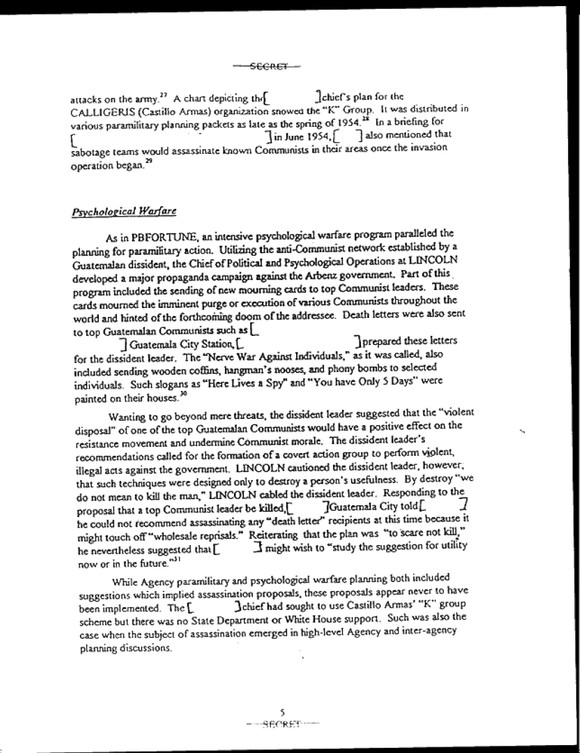

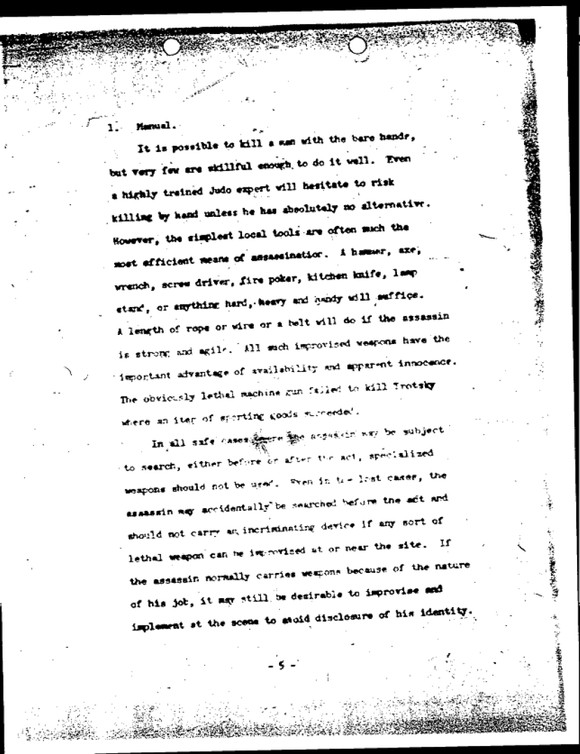
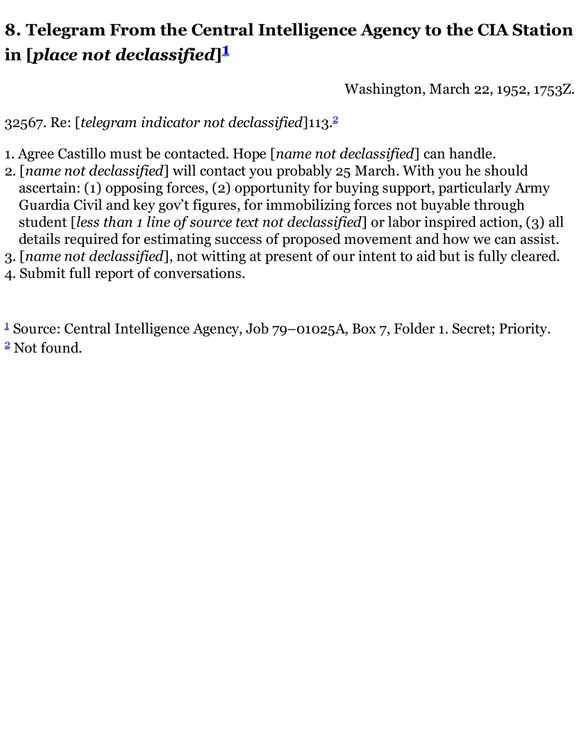
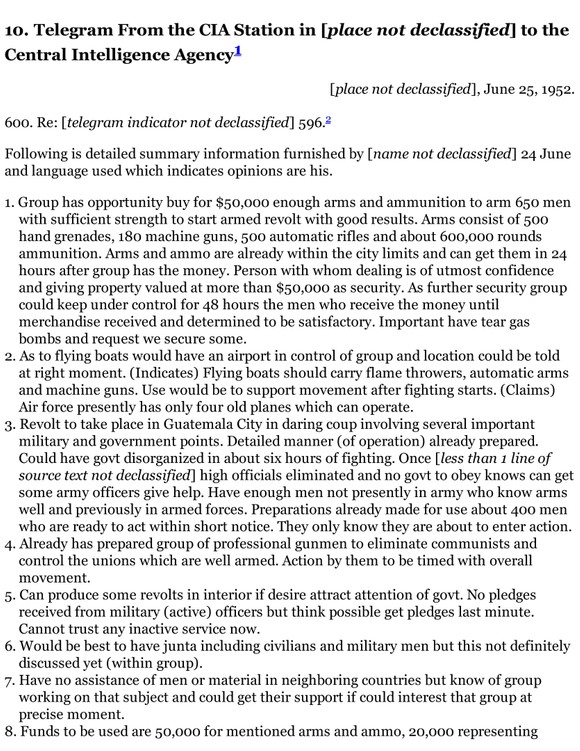
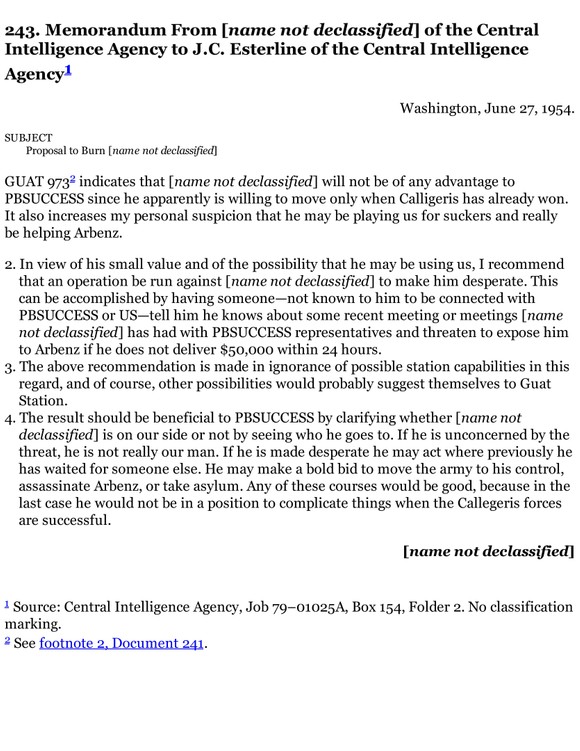


Related products
-
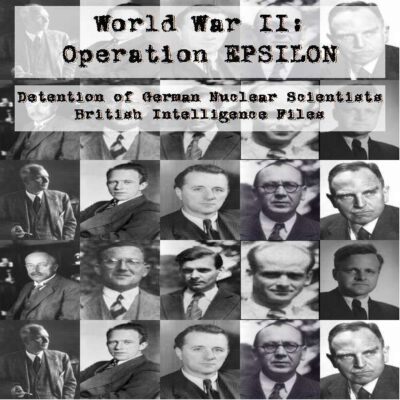
World War II: Operation EPSILON Detention of German Nuclear Scientists British Intelligence Files
$19.50 Add to Cart -
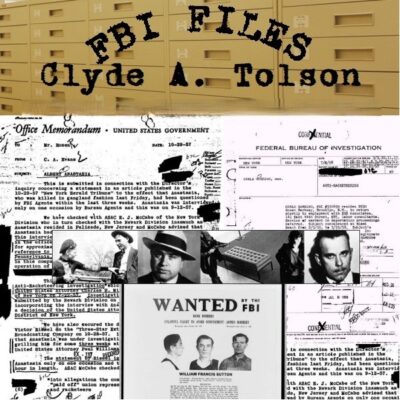
Clyde A. Tolson – J. Edgar Hoover FBI Files
$19.50 Add to Cart -
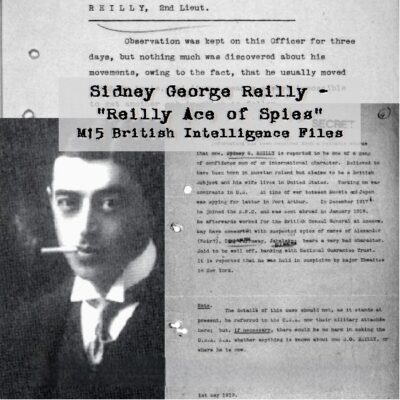
Sidney George Reilly – “Reilly Ace of Spies” MI5 British Intelligence & Royal Air Force Files
$19.50 Add to Cart -
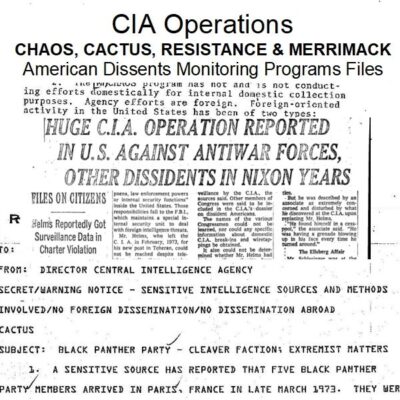
CIA Operation CHAOS, CACTUS, RESISTANCE & MERRIMACK
$19.50 Add to Cart